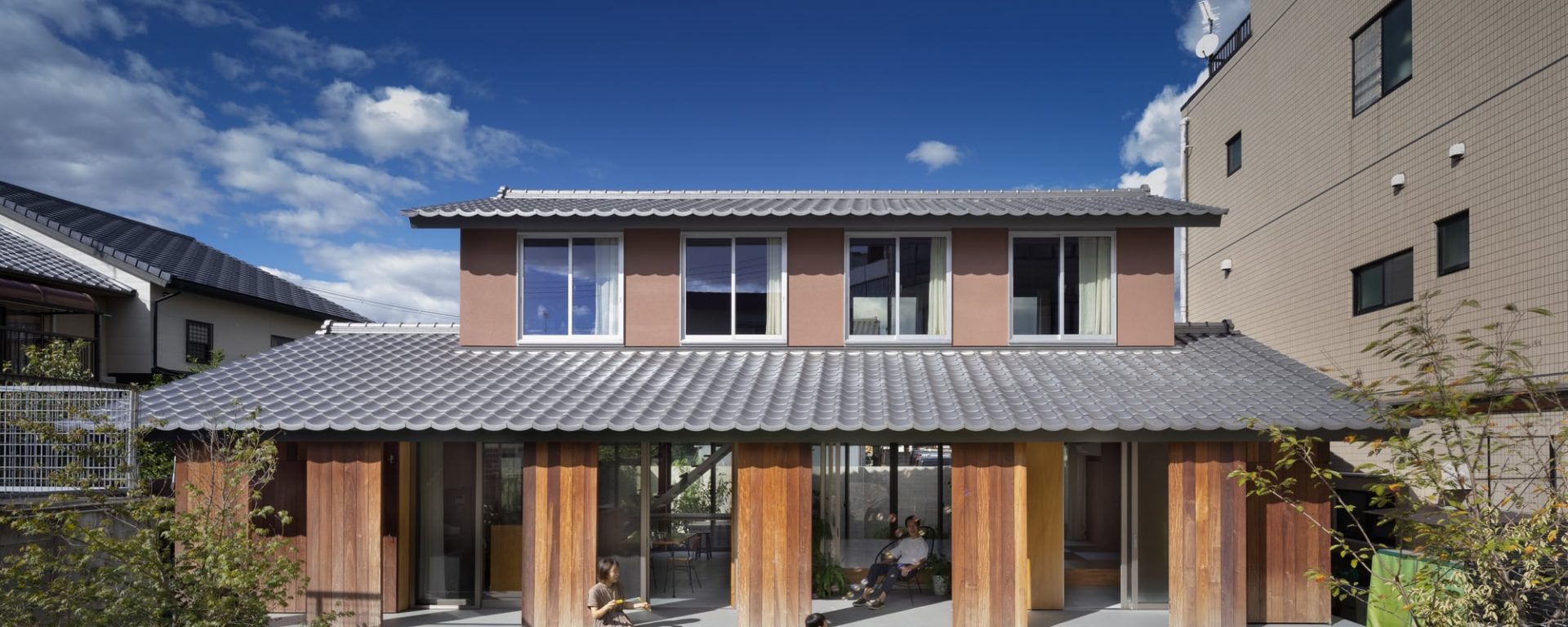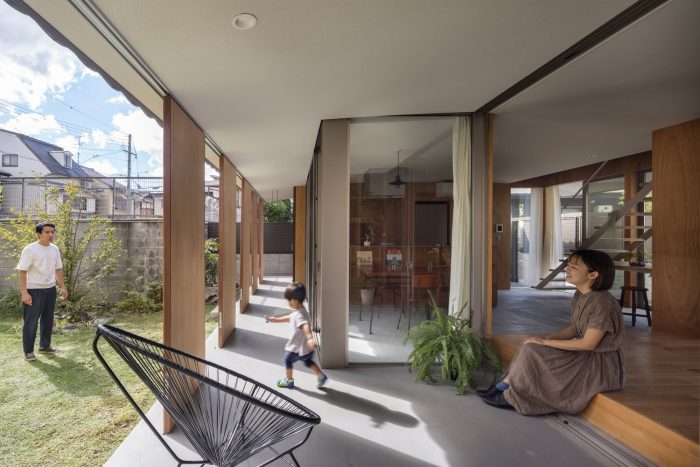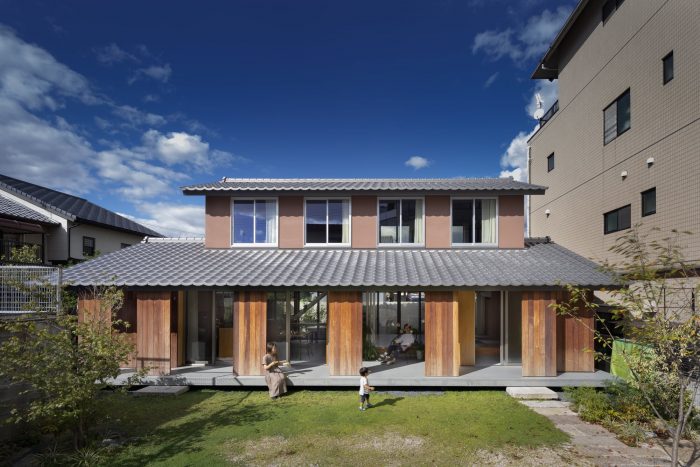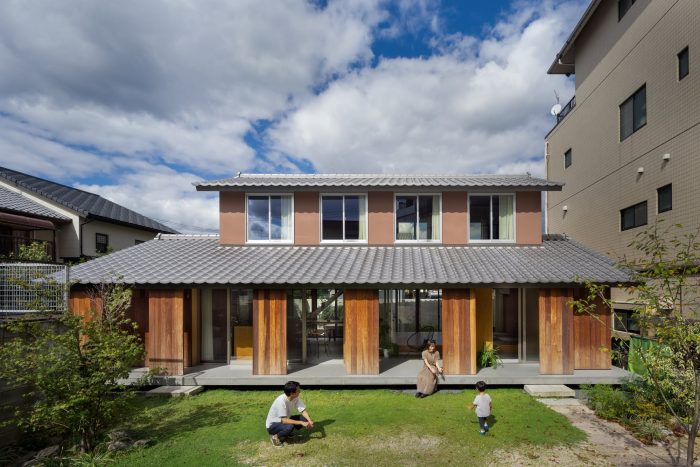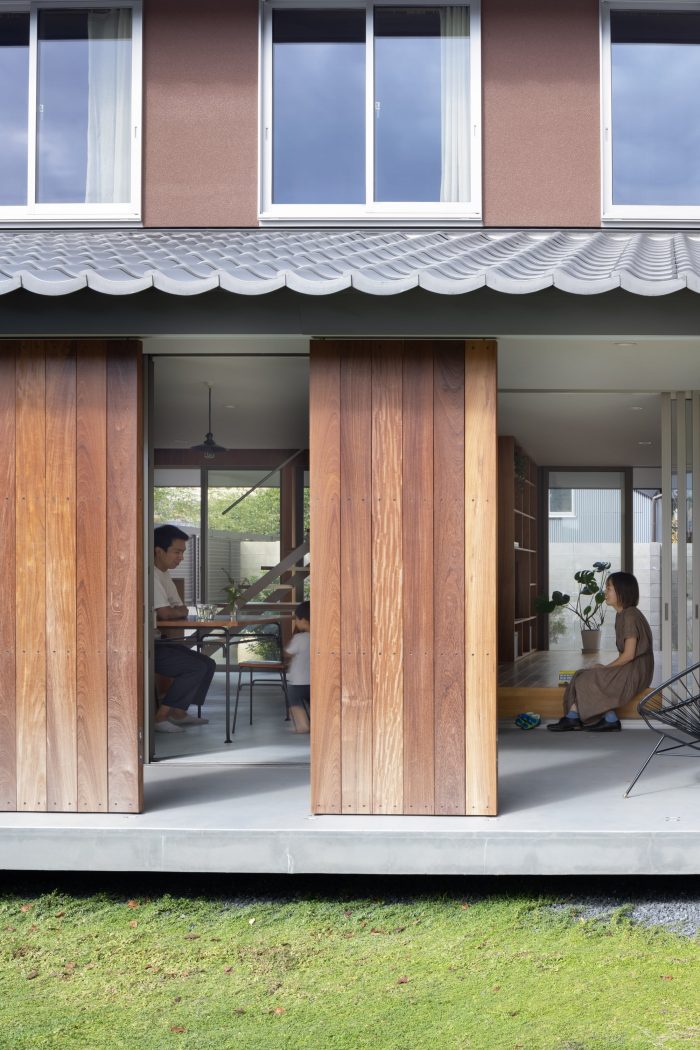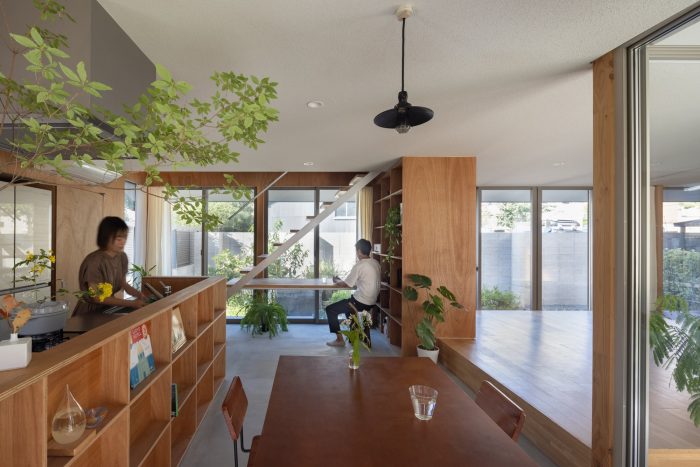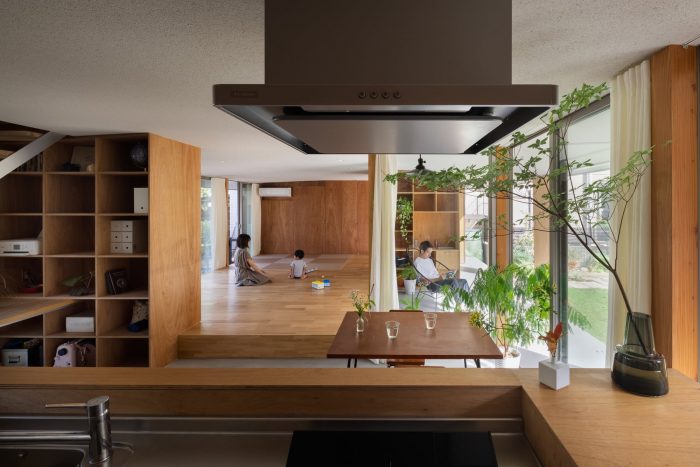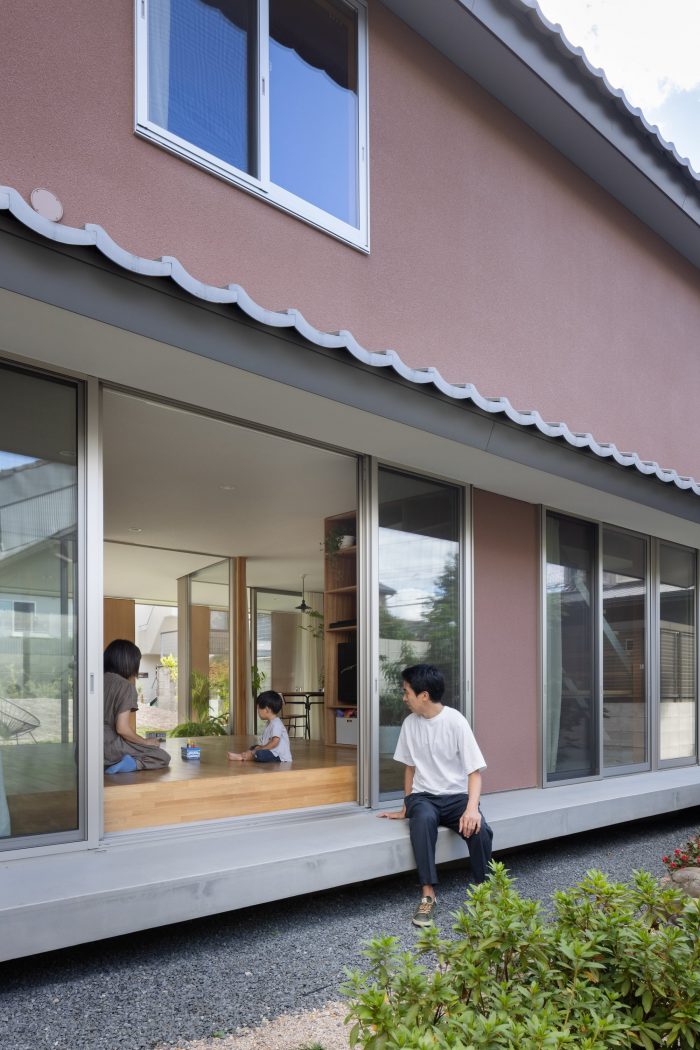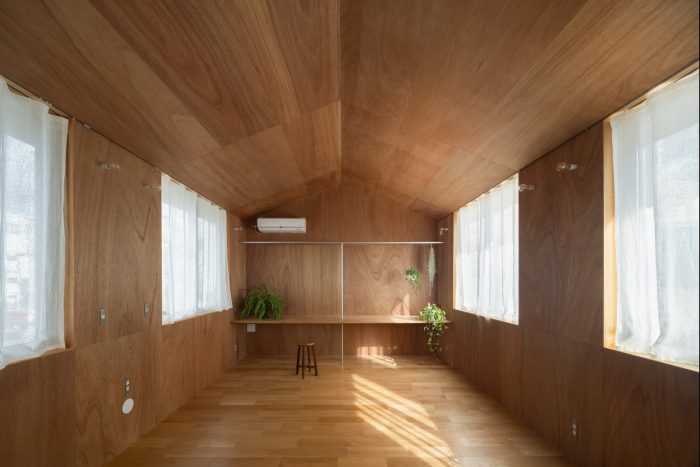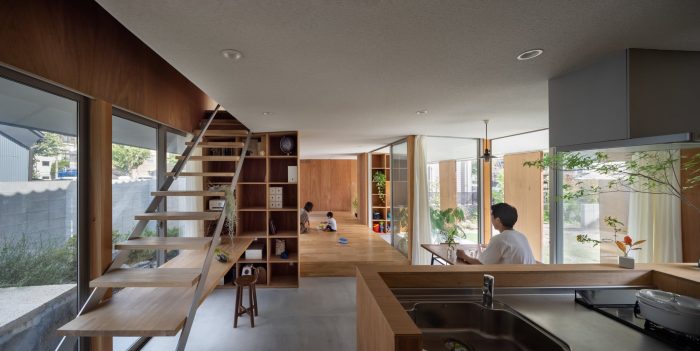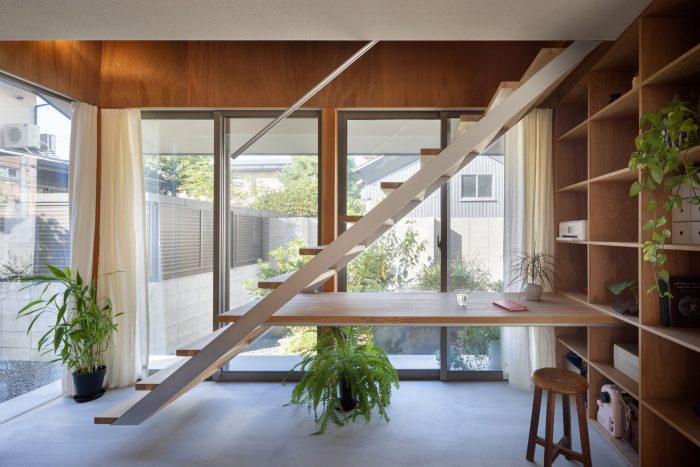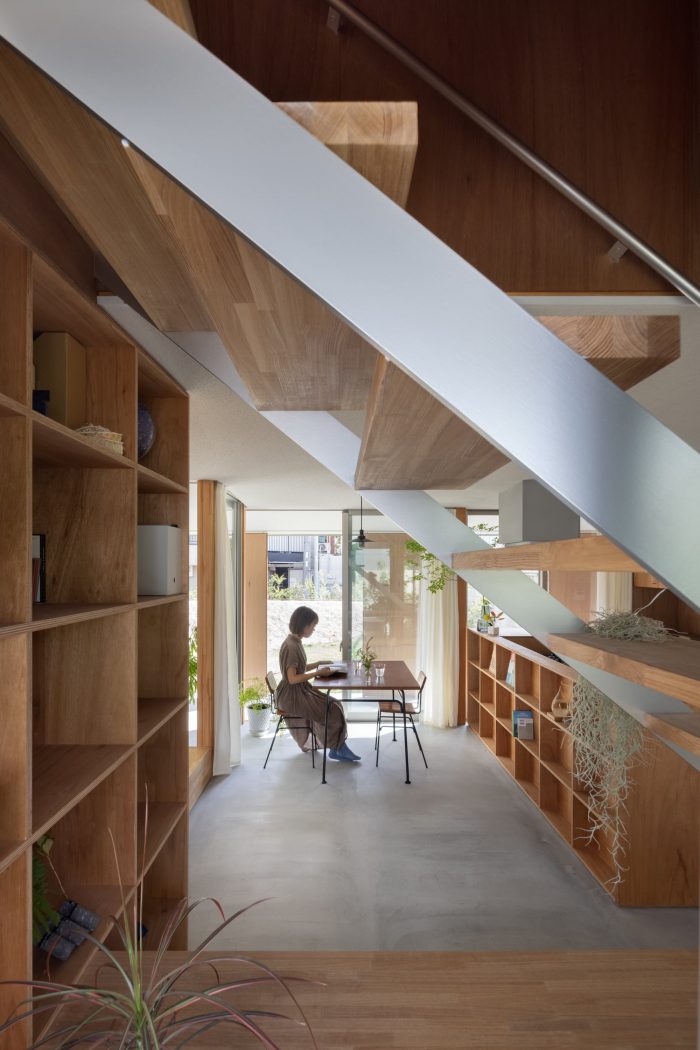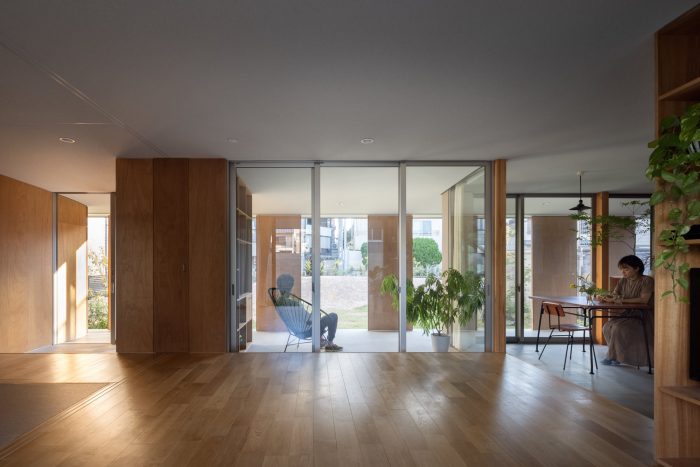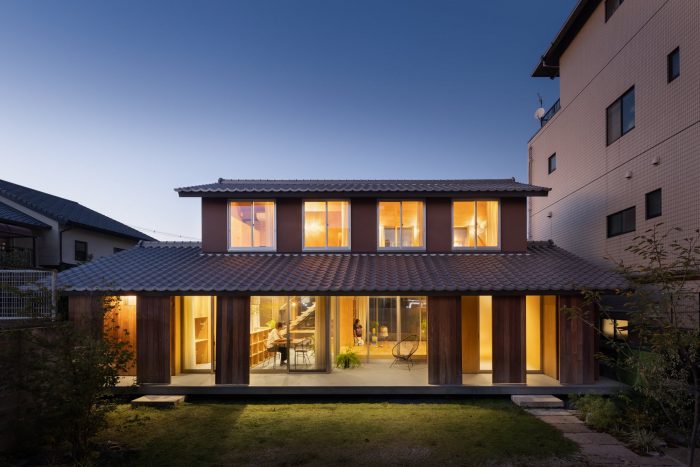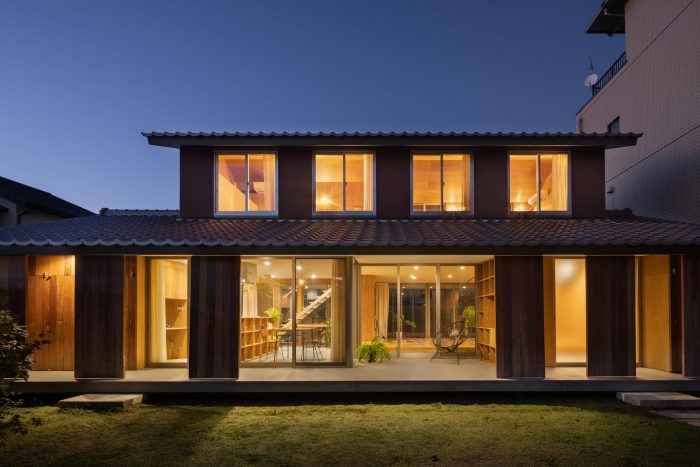在京都市乐北区有一块土地,自江户时代后期以来,一代接一代地居住着。每个家庭成员都在这块土地上建起了房子和工作场所,他们在一起生活,又彼此分开。虽然现在有制度上的所有权界限,但直到最近,人们还跨越土地的界限,根据需要来往,实际上,界限是松散的。就在这里生活的时间长短而言,房子是短暂的,而土地是永久的,所以当你住在这里的时候,你会觉得自己是住在土地上,也是住在房子里。这片土地上的两栋房子和车间要被拆除,以便为一栋房子让路。
There was a piece of land in the Rakuhoku district of Kyoto City that had been lived in from generation to generation since the late Edo period. Each family member built a house and a place of work on the land, and they lived together and apart from each other. Although there are now institutional boundaries of ownership, until recently, people crossed the boundaries of the land and came and went as needed, and in reality, the boundaries were loose. In terms of the length of time spent here, the house is ephemeral and the land is permanent, so when you live here, you will feel like living in the land as well as in the house. The two houses and the workshop on this land were to be demolished to make way for a single house.
在这里建房时,人们认为使用现代大规模生产的房子的形式是不合适的。因为在现代,基于现代法律的私有财产和个人主义已经得到实施,而作为一个家庭的城堡的房子,其建造形式是用围墙和大门围住土地,用外墙和入口门围住生活空间,将城市与生活空间隔开,并确保一个仅限于每个家庭成员的世界。然而,由于土地仍然保留着现代法律之前的前现代时代的松散边界,因此,重新考虑住房形式,在时间上比现代时代更远一点,似乎更好。与其说是一个被坚实的边界与世界其他地方隔绝的房子,不如说是创造一个扩大意识并扎根于世界的领土房子。
When building a house here, it was not considered appropriate to use the form of a modern mass-produced house. Because in modern times, private property and individualism based on modern law have been implemented, and the house, which serves as a castle for one family, is built in a form that encloses the land with a wall and gate, and the living space with an exterior wall and entrance door, separating the city from the living space and ensuring a world limited to each family member. However, since the land still retains the loose boundaries of the pre-modern era before modern law, it seemed better to reconsider the housing form by going back a little further in time than the modern era. Rather than a house that is cut off from the rest of the world by solid boundaries, it is possible to create a territorial house that expands consciousness and is rooted in the world.
这个住房项目需要隐私和光线。如果我们要把这些转化为空间,我们就必须提供坚实的外墙和内墙,在正确的方向上有适当大小的窗户,以及一个光线充足的室内,这是今天大规模生产的住房的标准。然而,在这里,通过将 “隐私和轻盈 “理解为 “宽敞和开放 “来平衡这两个对立面似乎是可取的。这不是一块新开发的小地块,而是在城市及其亲属的背景下的大地块,它提供了创造具有领土感和开放性的房屋的可能性。
This housing project required privacy and light. If we were to translate these into space, we would have to provide solid exterior and interior walls, appropriately sized windows in the right orientation, and a well-lit interior, as is standard in today’s mass-produced housing. Here, however, it seemed desirable to balance these two opposites by reading “privacy and lightness” as “spaciousness and openness. It is not a newly developed small plot of land, but a large plot of land in the context of the city and its relatives, that offers the possibility of creating a house with a sense of territory and openness.
为了创造一个生活区域,我抬高了路边的土壤,创造了一个漂浮在土地上的土质地板,并悬挂了一个剥落的天花板。堤坝创造了一个与城市的距离,同时又与城市相连。漂浮的土质地板是作为材料的地面的一员,但其漂浮的轮廓创造了一个与地面有距离的区域。mukuri天花板向外延伸,创造了一个笼罩室内的区域。地板和屋檐背离地面,形成一个不平整的玻璃表面,室内的一部分有一个用木板和榻榻米铺成的高架地板。通过这种方式,从房子的中心到城市的私人区域被分阶段创建,然后再分阶段开放。
In order to create an area for living, I raised the soil along the roadside, created an earthen floor floating above the land, and hung a peeled ceiling. The embankment creates a distance from the city, while still being connected to it. The floating earthen floor is a member of the ground as a material, but its floating contour creates an area distanced from the ground. The mukuri ceiling extends outward and creates an area that envelops the interior. The floor and eaves are set back from the ground to create an uneven glass surface, and part of the interior has a raised floor with wooden planks and tatami mats. In this way, private areas are created in stages from the heart of the house to the city and then opened up in stages.
此外,体积、装置和树木的安排是为了支持居民的日常生活。体积包括住房设备、仓库和承重墙。上层也是体量的一部分,包含最私人的卧室。固定装置位于屋檐、地板和榻榻米房间周围,以调节隐私、阳光和风。树木控制着室内和室外的视线,并反映了土地上的四季变化。
In addition, the volume, fixtures, and trees are arranged to support the daily life of the residents. The volume includes housing equipment, storage, and bearing walls. The upper floor is also part of the volume and contains the most private bedroom. Fixtures are located around the eaves, floor, and tatami room to regulate privacy, sunlight, and wind. Trees control the line of sight between the interior and exterior and reflect the seasons on the land.
外观是一个有屋檐的平顶房屋,屋檐下有瓦片,外墙上有一个重复的栅栏式的表面。外观是一个有屋檐的平顶房屋,有屋檐和瓦片屋顶,外墙上有一个重复的类似于栅栏的表面。屋檐和配件遵循京都的传统景观,同时,我们试图与现代大规模生产的由盒子和墙壁组成的房屋的封锁气氛保持距离。
The exterior is a gabled flat-roofed house with eaves and tile roofing, with a repeating fenestration-like surface on the exterior walls. The exterior is a gabled, flat-roofed house with eaves and tile roofing, with a repeating fenestration-like surface on the exterior walls. The eaves and fittings follow the traditional landscape of Kyoto, and at the same time, we tried to distance ourselves from the blocking atmosphere of modern mass-produced houses consisting of boxes and walls.
就技术而言,堤坝、树木、土炕、高架地板和配件的构成是在花园、寺庙、神社和中世纪房屋中发现的古老方法,而在截面上对形式的操纵和在平面上对离散元素的安排是现代方法。换句话说,它有选择地与过去和现在保持距离,或将自己插入其中。 就环境而言,在确保自然环境和财产等最小边界的同时,艺术家创造了一个可以广泛感知和舒适居住的区域。它没有被现代和当代机构划定的边界所限制,也没有过分开放地与之相对立;人们应该在这些主观创造的区域中生活。
In terms of technique, the composition of the embankment, trees, earthen floor, raised floor, and fittings is an old method found in gardens, temples, shrines, and medieval houses, while the manipulation of form in section and the arrangement of discrete elements on the plane are modern methods. In other words, it selectively distances itself from or inserts itself into both the past and the present. In terms of the environment, while ensuring minimal boundaries such as the natural environment and property, the artist has created an area that is broadly perceptible and comfortable to live in. It is not confined by the boundaries drawn by modern and contemporary institutions, nor is it overly open in opposition to them; it is in these subjectively created areas that people should live.
Architects: IN STUDIO
Area : 95 m²
Year : 2021
Photographs :Makoto Yoshida
Lead Architects : Izumi Kozasa, Naoko Okumura
Structural Design : MOF
Construction : Hayashi Construction
Structural Design And Supervision : Hitomi Morofuji
City : Kyoto
Country : Japan

